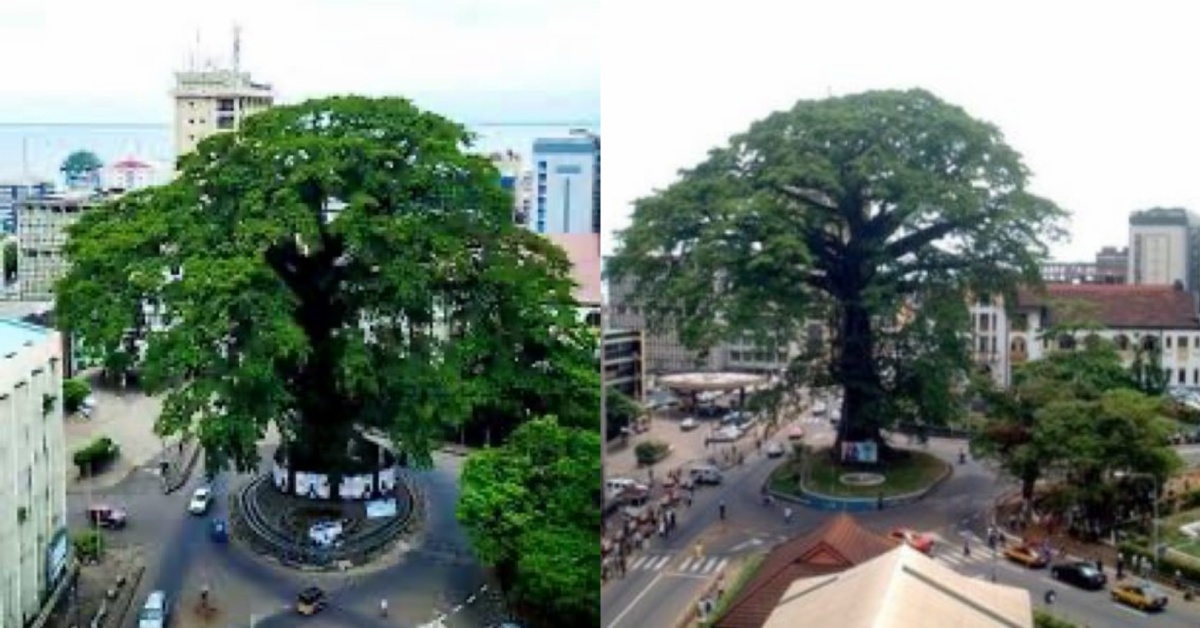In the heart of Freetown, the capital city of Sierra Leone stood a majestic tree that holds immense historic significance — the Cotton Tree.
This iconic tree is a symbol of national heritage, resilience, and the enduring spirit of the Sierra Leonean people. From its role in the founding of Freetown to its status as a cultural and political gathering place, the Cotton Tree stands as a living witness to the nation’s history.
The story of the Cotton Tree begins in 1787 when a group of formerly enslaved Africans, known as the “Black Poor,” were granted their freedom by the British. Under the sprawling branches of this very tree, they gathered to establish a settlement, marking the birth of Freetown and the founding of Sierra Leone as a colony for freed slaves. This significant event imbued the Cotton Tree with a deep sense of historical importance and made it a symbol of freedom and liberation.
Beyond its role in the city’s founding, the Cotton Tree holds great cultural significance for the diverse ethnic groups in Sierra Leone. Many local communities consider the tree to be sacred, believing it to be a bridge between the living and ancestral spirits. For generations, it has served as a gathering place for ceremonies, community meetings, and important events, fostering a strong sense of unity and cultural identity.
Throughout the years, the Cotton Tree has stood witness to numerous historical events that have shaped Sierra Leone’s trajectory. It endured the abolition of the transatlantic slave trade, witnessing the struggles and triumphs of those who fought for freedom. It witnessed the establishment of Sierra Leone as a British colony, bearing witness to the complexities of colonial rule. And it stood tall during the nation’s fight for independence and the subsequent challenges faced during the quest for democracy.
The Cotton Tree also played a pivotal role in Sierra Leone’s political landscape. It served as a gathering place for political rallies, where leaders, activists, and citizens have come together under its sheltering branches to voice their concerns, advocate for change, and celebrate important milestones in the nation’s democratic journey.
The tree had seen the ebb and flow of political tides, serving as a silent observer of the evolution of Sierra Leone’s governance.
As the Cotton Tree’s historic importance grew, it became a prominent tourist attraction in Freetown. Visitors from around the world come to see this living monument and learn about its rich heritage. The surrounding area was developed as a public space, providing a tranquil setting for people to gather, relax, and appreciate the cultural and historical value embodied by the Cotton Tree.
Today, the Cotton Tree has fallen, but it still stands as a testament to the struggles and triumphs of the Sierra Leonean people throughout history. It serves as a tangible reminder of the country’s origins, resilience, and ongoing pursuit of freedom, equality, and justice.


 8 Comments
8 Comments









The cotton tree is just a tree that has a life span and when once that expires, it will certainly fall down. APC will soon refer it as an omen for something bad about to happen to SLPP. Because they can politicise anything.
It a sine and teaching to those that have brain to think; that nothing would last forever neither living or non-living be mindful of what you are doing in this planet one d upay you have to leave as how the Cotton Tree leave.
Wow Allah is great after how many years so finally cotton tree has fallen.just bear in mind that nothing last forever.
Sierra Leone sierra leone we thank GOD as I was evidence of these historic event and I was at the cotton tree area yesterday on a meeting for the peace of sierra leone long live sierra leone.
I got emotional reading this historic piece of cotton tree, l suggest the government ensures the replanting of another oak tree, as nothing beautifies the sight as a tree. Without that cotton tree, Freetown will be strange on photos as the then cotton tree was our symbol of pictoral identity.
Mohamed Kamara u are a FOOL
Lovely summary of the great silk cotton tree
It will be remembered for a very long time
I hope we pass this history to our generation
If someone can imagine since 1787 to 2023 it has been a while in the life span of this cotton tree. Above all nothing last forever!